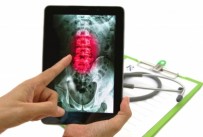Back pain that’s not from the back

Back pain that’s not from the back
Written by: Paul Kochoa, PT, DPT, OCS, CKTP, CGFI
A recent article on CNN.com outlined a problem that I’ve run into a few times with my patients. It’s the back pain that most surgeons will not find… They don’t find it because they’re not looking in the right place. It’s sacroiliac pain or a dysfunction of the sacroiliac joint (SI joint).
The article talks about how surgeons miss this diagnosis because they’re focused on the lumbar spine, the lower back. The situation is fairly common. You go to a back pain doctor, you get an X-ray or MRI, and it shows degenerative changes in your spine, a herniated disc, or some other issue. The problem is that these findings from the X-ray or MRI are fairly common. As I’ve posted before about back pain and MRI’s, a finding of a herniated disc or degenerative change in the lumbar spine doesn’t directly correlate with how much pain or dysfunction you have. So what happens is that the back doctor sees the X-ray or MRI results and says, “Yup, that’s why you have back pain, let’s schedule a surgery.” But according to the CNN article, about 25% of back pain can be from the SI joint. So the surgery and treatment that you would have received would be for the wrong diagnosis.
The SI joint is part of the pelvis, which is made up of three bones: two innominate bones, one left and one right; and a sacrum bone, in the middle. These three bones form a ring that is your pelvis. The sacrum is the base of the spine, it connects to the last lumbar bone, L5 vertebrae, on the top, and the two innominate bones on the sides. The SI joint is a sliding joint that really doesn’t move that much, but when it does, you’ll feel it. When it is out of place, it can cause pain that may be referred out the hip or buttock area or up into the lower back.
A physiotherapist can do a physical examination to look specifically for this issue and we can do simple techniques that can reduce the possible dislocation and fix the SI joint problem. The next step is to perform specific stabilizing exercises to make sure your SI joint stays in place.
Remember, your back pain may be from a different structure. Make sure to rule out all other possible causes before thinking about surgery.
If you would like more information, please call Professional Physical Therapy and Training at 973-270-7417. Our offices are located within the YMCA locations in Madison and Summit, NJ. You do not need to be a member of the YMCA to visit with us.
Image courtesy of Praisaeng / FreeDigitalPhotos.net